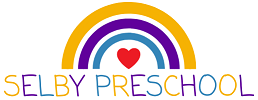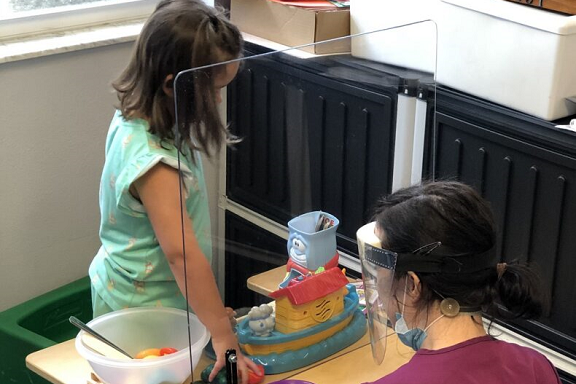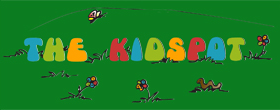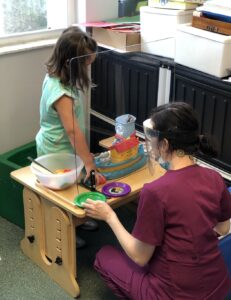
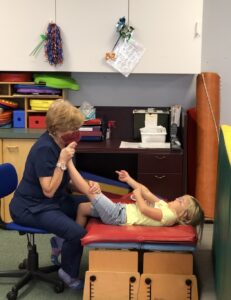
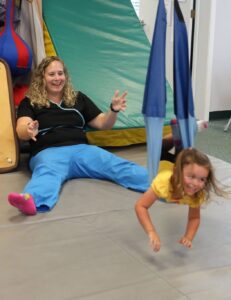
We offer the following types of therapy:
Occupational Therapy: Therapeutic use of work, self-care, and play activities to increase independent function, enhance development, and prevent disability.
Physical Therapy: Habilitation and rehabilitation concerned with restoration of activity and prevention of disability, with use of a variety of modalities to achieve these purposes.
Speech/Language Therapy: Diagnosis, treatment, and remediation of receptive/expressive speech and language; oral motor deficits; and feeding problems.
Aquatic Therapy: Treatments and exercises performed in our campus heated pool for relaxation, fitness, rehabilitation, and other therapeutic benefit.
SPECIALIZED TREATMENT TECHNIQUES AND SERVICES PROVIDED INCLUDE:
Neuro-developmental Treatment (NDT): Use of a variety of hands-on techniques to enhance voluntary movement against gravity and facilitate rotational patterns and equilibrium responses in order to promote more complex skilled movement.
Sensory Integration: The enhancement of a child’s ability to take in sensory information from the environment and perform with an appropriate adaptive response. Wilbarger Protocol, a deep pressure and proprioceptive technique designed by Patricia Wilbarger to address sensory defensiveness as part of a sensory diet.
Therapeutic Listening: The use of filtered or electronically altered music (in combination with a variety of other treatment techniques) to promote integration and organization of attention, behavior, and movement. Typically, those who benefit most, have difficulty with modulation, self-regulation, body-in-space, and/or body awareness.
Feeding Therapy: Use of oral-motor/feeding techniques designed to strengthen and facilitate mature jaw and tongue movements for mastication and motility of food/liquid in the mouth as well as to increase the tolerance for a variety of food/liquid intake.
Myofacial Release: A safe, effective, gentle hands on technique designed to decrease pain, decrease restrictions and increase range of motion.
Handwriting Without Tears: A specific handwriting curriculum that combines mulit-sensory input and teaching methods aimed at developing legible and fluid handwriting.
ABA has evolved in the last thirty years from the very clinical, sterile teaching environments of the 1980’s, to a more naturalized teaching approach, while maintaining its roots in applied behavior analysis and the principles of learning theory. In this way, children learn language in a more functional and social manner, that is more likely to generalize to new settings and situations. For young children, this often means play based therapy, with parent training to provide carryover during non-therapy times. For older children, this can mean services provided in schools and/or in the community, as well as at home, to ensure generalization and targeting of all necessary skills.
